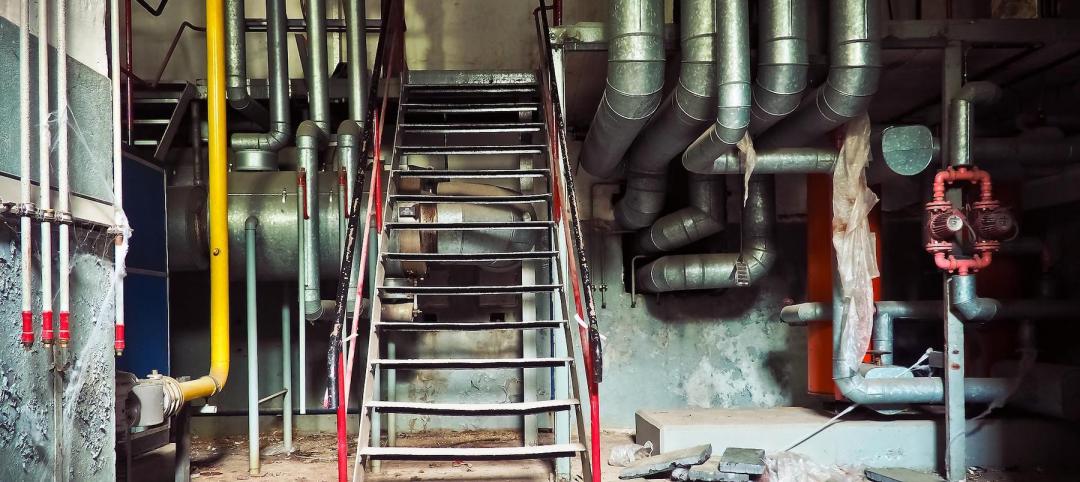The Biden Administration’s proposal on building materials rules used on federal construction and federally funded state and local buildings would significantly boost the made-in-America mandate.
In the past, products could qualify as domestically made if at least 55% of the value of their components were from the U.S. The administration intends to increase the percentage of value in stages from 55% to 60%, and then to 75%.
Implementing these rules will add complexity to sourcing materials for projects receiving federal funding. For example, a mix between U.S. and Canadian dimensional lumber for a project probably wouldn’t be allowed if the Canadian wood was processed outside the U.S. But domestically manufactured lumber made from Canadian logs would likely be acceptable.
The domestic mandate has raised concerns from construction industry groups. The National Association of Home Builders has urged exemptions for single-family and multifamily affordable housing projects. Kojo, a firm that makes materials management software for contractors, says that restricting the supply base to American-made is likely going to burden contractors who are already having difficulty sourcing materials at reasonable costs.
According to the Biden Administration, the proposed rule directs the following changes to strengthen Buy American requirements:
- “Make Buy American Real” and close loopholes by raising the domestic content threshold. The Buy American statute says products bought with taxpayer dollars must “substantially all” be made in the U.S. However, today, products could qualify if just 55%–just over half—of the value of their component parts was manufactured here. The NPRM proposes an immediate increase of the threshold to 60% and a phased increase to 75%. This proposal would close a problematic loophole in the current regulation, while also allowing businesses time to adjust their supply chains to increase the use of American-made components. If adopted, this change would create more opportunities for small- and medium-sized manufacturers and their employees, including small and disadvantaged enterprises, from all parts of the country. To support this work, the Small Business Administration has created a new manufacturing office in its federal contracting division.
- Strengthens domestic supply chains for critical goods with new price preferences. As the pandemic made clear, supply chain disruptions can impact the health, safety, and livelihoods of Americans—leaving us without access to critical goods during a crisis. Some products are simply too important to our national and economic security to be dependent on foreign sources. The NPRM proposes applying enhanced price preferences to select critical products and components identified by the Critical Supply Chain review, mandated under E.O. 14017, and the pandemic supply chain strategy called for under E.O. 14001. These preferences, once in place, would support the development and expansion of domestic supply chains for critical products by providing a source of stable demand for domestically produced critical products.
- Increases transparency and accountability in Buy American rules. Reporting challenges have hampered implementation of Buy American rules for decades. Currently, contractors only tell the government if they meet the content threshold rather than reporting the total domestic content in their products. The NPRM proposes to establish a reporting requirement for critical products. The new reporting requirement would bolster compliance with the Buy American Act and improve data on the actual U.S. content of goods purchased. More complete and accurate data would be used to target future improvements to support America’s entrepreneurs, farmers, ranchers, and workers— and along the way, create good jobs and resilient communities.
Learn more about the Buy American Rule at Whitehouse.gov.
Related Stories
Standards | May 9, 2022
New GSA standards set carbon limits on building materials for all major projects
New General Services Administration standards place limitations on high carbon-emitting building materials for all major projects under the GSA umbrella.
Higher Education | May 5, 2022
To keep pace with demand, higher ed will have to add 45,000 beds by year-end
The higher education residential sector will have to add 45,000 beds by the end of 2022 to keep pace with demand, according to a report by Humphreys & Partners Architects.
Legislation | May 4, 2022
Washington is first state to mandate all-electric heat for new large buildings
Washington recently became the first state to require all electric heat for new buildings.
Codes and Standards | May 3, 2022
American Institute of Steel Construction updates environmental product declarations
The American Institute of Steel Construction has released updated environmental product declarations (EPDs) “to help designers and building owners design more environmentally friendly buildings and bridges,” according to an AISC news release.
Codes and Standards | May 2, 2022
Developer Hines, engineer MKA develop free embodied carbon reduction guide
Real estate management and investment firm Hines has released the Hines Embodied Carbon Reduction Guide. The free guide, produced with Magnusson Klemencic Associates (MKA), is the result of a two-year effort, relying on MKA’s industry-leading knowledge of carbon accounting and involvement in programs such as the Embodied Carbon in Construction Calculator (EC3) Tool.
Codes and Standards | Apr 28, 2022
Architecture firm Perkins&Will to deliver ‘carbon forecasts’ for clients
Global architecture firm Perkins&Will says it will issue its clients a “carbon forecast” for their projects.
Codes and Standards | Apr 27, 2022
White House guidance on Buy American for infrastructure includes waiver process
Recently released guidance on the Buy American provision within the $1.2 trillion Infrastructure Investment and Jobs Act released by the Office of Management and Budget includes a waiver process.
Multifamily Housing | Apr 26, 2022
Investment firm Blackstone makes $13 billion acquisition in student-housing sector
Blackstone Inc., a New York-based investment firm, has agreed to buy student-housing owner American Campus Communities Inc.
Codes and Standards | Apr 25, 2022
Supply chain constraints, shifting consumer demands adding cost pressures to office fit-outs
Cushman & Wakefield’s 2022 Americas Office Fit-Out Cost Guide found supply chain constraints and shifting consumer demands will continue to add pressure to costs, both in materials and labor.
Legislation | Apr 21, 2022
NIMBYism in the Sunbelt stymies new apartment development
Population growth in Sunbelt metro areas is driving demand for new apartment development, but resistance is growing against these projects.

















